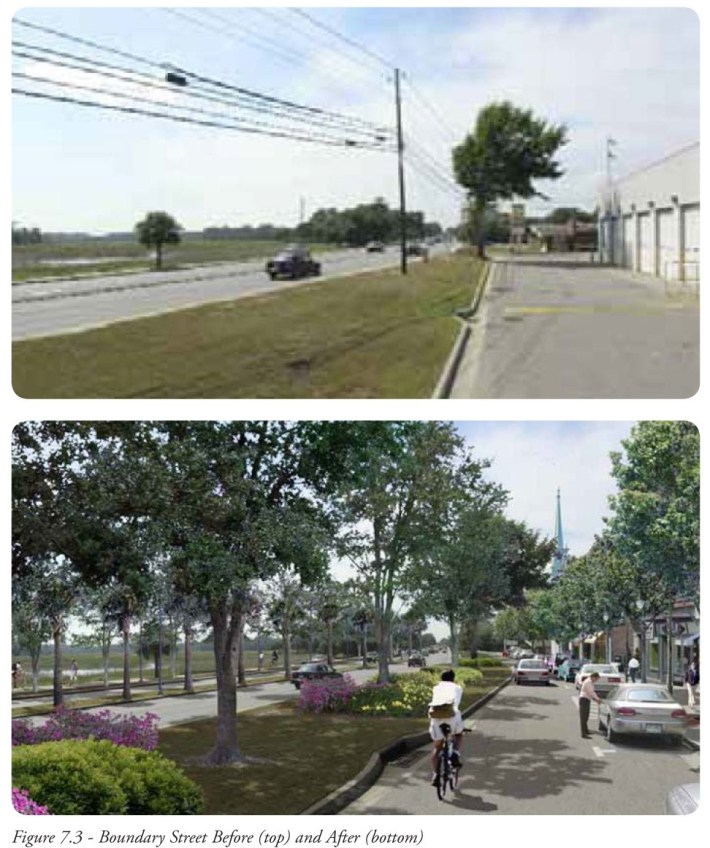In the third round of TIGER funding, the Obama administration has continued to demonstrate a strong commitment to bike and pedestrian projects.

Of the 46 projects chosen for funding, 22 incorporate some aspect of bike and pedestrian accessibility, and nine of them make cyclists or pedestrians the primary beneficiary, said Kartik Sribarra of the Rails-to-Trails Conservancy.
Among the more important active transportation projects to win the nod from U.S. DOT in this round of funding is Chicago's bike-share system. RTC also highlights Beaufort, South Carolina's success in securing a $12.6 million grant to improve the walkability on a major thoroughfare.
Currently, the town's main street, Boundary Street, is a visually unappealing, car-oriented suburban-style arterial. But TIGER III money will help convert the street into a landscaped, walkable, bikeable boulevard.
This project is the result of a great deal of planning and investment by the local community. According to U.S. DOT, the city of Beaufort has adopted a new land use plan and form-based codes, and they've approved a one-cent sales tax increase to pay for transportation projects.
TIGER III money will also provide for Main Street revitalization projects in Buffalo, New York; St. Albans, Vermont and American Falls, Idaho.
St. Albans is a second-time winner, having received funding for walkability projects in the second round of TIGER funding. This rural town in Vermont's northwest corner won just over $2 million for a streetscape project in North Main Street. The project will include new sidewalks and bike infrastructure, linking downtown to a 19-mile pedestrian network and a 26-mile bicycle trail.
In addition, Stamford, Connecticut won funding to improve pedestrian access to its transit center. TIGER III funding will also help build sidewalks and a bike trail on Snake Road in Florida's Big Cypress Reservation.
RTC's Sribarra says U.S. DOT's prioritization of active transportation projects is good for everyone, whether they travel by car or bike.
"A million dollars is a drop in the bucket of the price of a road," he said. "But for this same million dollars, scores of people every day will benefit from a safer, healthier commute, which also has the benefit of getting cars off the road during peak periods."
Deron Lovaas of the Natural Resources Defense Council said on the Switchboard blog that the environmental merits of the projects selected for funding under TIGER have turned him from a skeptic to a believer:
My initial concern about this program [was] that Federal Highways might dominate the competition and in spite of laudable criteria some 'highways to nowhere' might get funded. We don’t need more waste in the transportation program. I’m happy to eat my words in public now (I've already done so with friends at DOT), as the Transportation Department announces its third round of investments under this impressive program.





